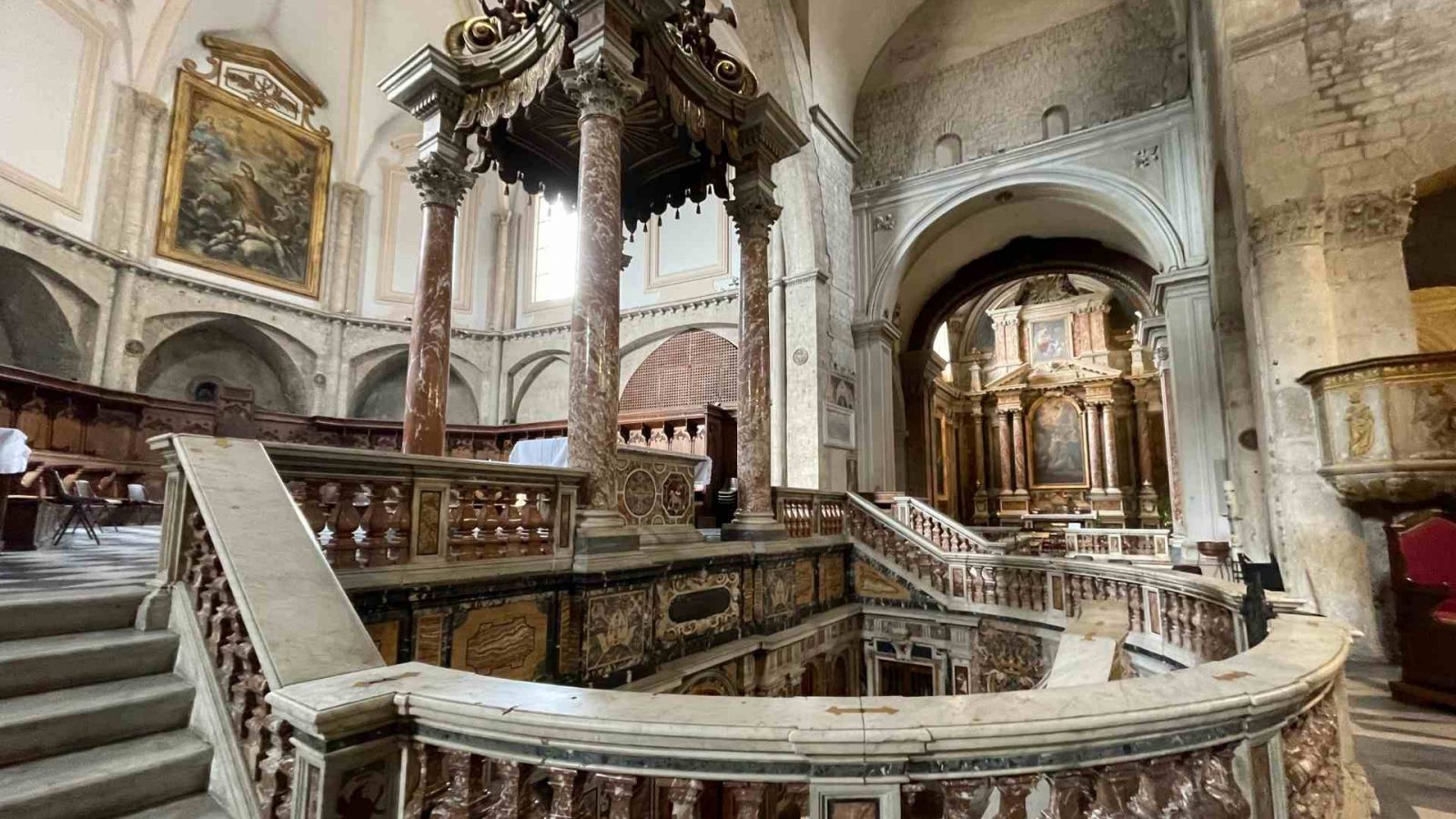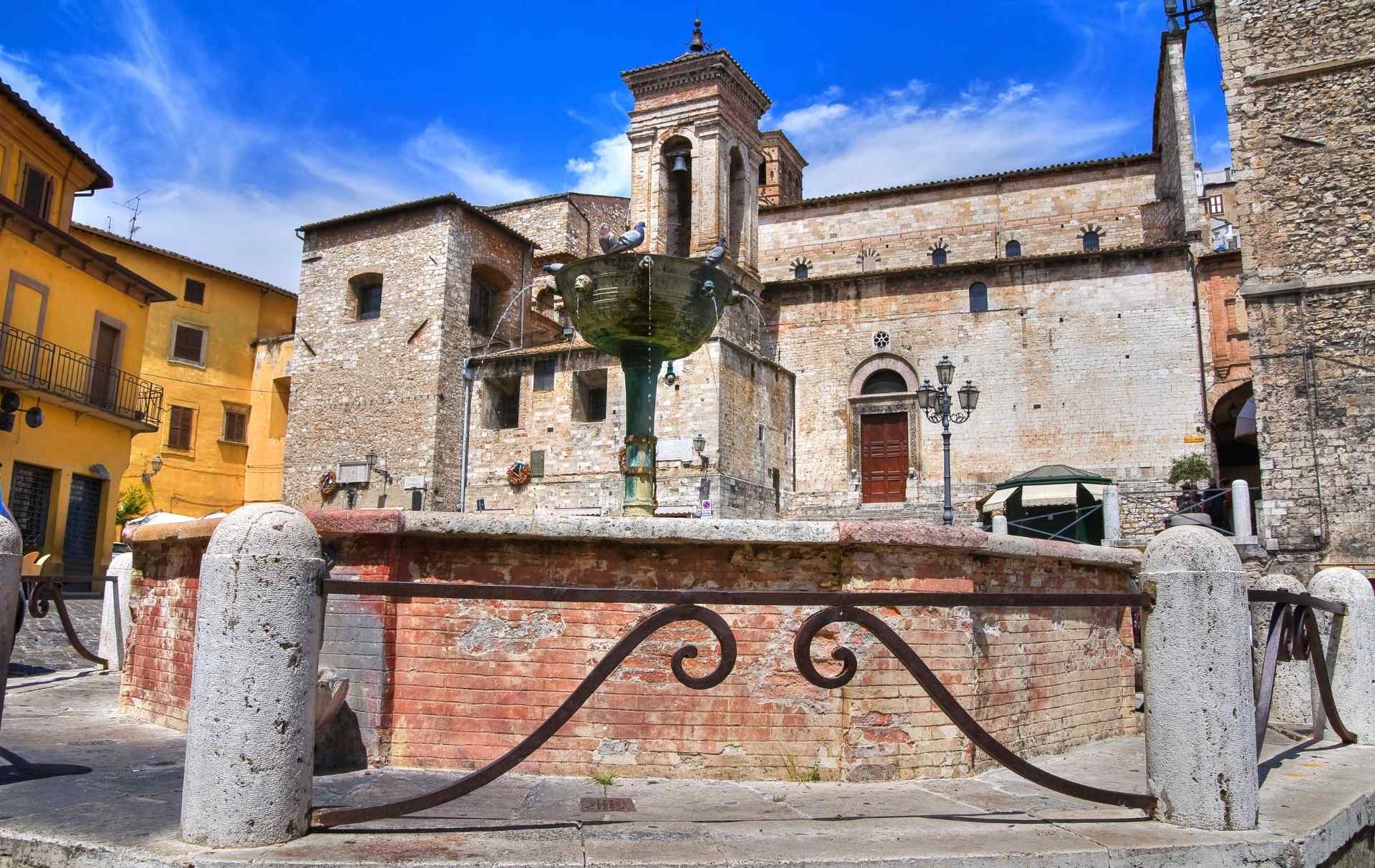Characteristic and unique is the architectonic baroque complex, made from the second half of the XVII century , which includes the Major Altar, the Confession and the Crypt which preserves the relics of San Giovenale.
The altar, the confession and the crypt: masterpieces of the Baroque period.
The building works started in 1642 after that the reconnaissance of the sacello, from the bishop of that time Giampaolo Bocciarelli, allowed the discovery of the relics which gave the impulse to the realization of a monumental architectural project that transformed the cathedral and was entrusted to the architect Vincenzo Zaccarelli.
Was thank to the Cardinal Giuseppe Sacripante, which donated to Narni even the hospice of Jesus and Maria, today in Piazza Galeotto Marzio and headquarter of the University, that was possible to develop the majestic project to which they also worked the architects Domenico Legendre, Giuseppe Paglia, Matthia De Rossi and Nicola Michetti.

The inspiration for Saint Peter’s masterpiece in Rome.
The model of the complex of the grandstand and the presence of the confession, brings us to the model of Saint Peter in Rome, made by Maderno for the confession and by Bernini and Borromeo for the altar in the form of a canopy and finished in 1633.
The bulk of the ciborium, the elliptical stairs that lead to the base of the confession, the plays of light that are reflected on the polychrome marbles are a compendium of the most refined baroque style of the time.
The crypt of San Giovenale
The crypt has the relics of the Patron which are placed today under a cenotaph surmounted by a reliquary bust in his honor kept in a cell embellished by the fresco of the dream of the night of San Giovenale.
Going down to the stairs which lead to the crypt, under the apse, there is a room with the altar devoted to the Saint with a big window that gives vision of the bust and the cenotaph.
The visit to the Cathedral.
Continues the visit to the Cathedral:
Go back to the Cathedral’s page.
Cathedral of San Giovenale
Piazza Cavour – 05035 Narni TR
Opening hours:
- from 8am to 12.30pm
- from 3.30pm to 7pm
It is suggested to park the car in the Suffraggio’s parking lot and go up with the elevator until Via Garibaldi reaching Piazza Cavour.
Discover Narni.
Continue to walk with us discovering what to see inside the walls of Narni.
Or discover the points of interest of Narni and of its territory:

Via del Campanile
A stair that goes from Via Garibaldi clambers up through one of the highest points of Narni: Via del Campanile is one of the most

Albornoz Fortress
The Albornoz Fortress, surrounded by a green nature, rises as a giant on the Maggiore mountain to dominate the Town of Narni , the via

Piazza Garibaldi
Piazza Garibaldi (Garibaldi Square) was once called Lake Square or Lacus square because of a large cistern used during the Middle Ages to provide water




